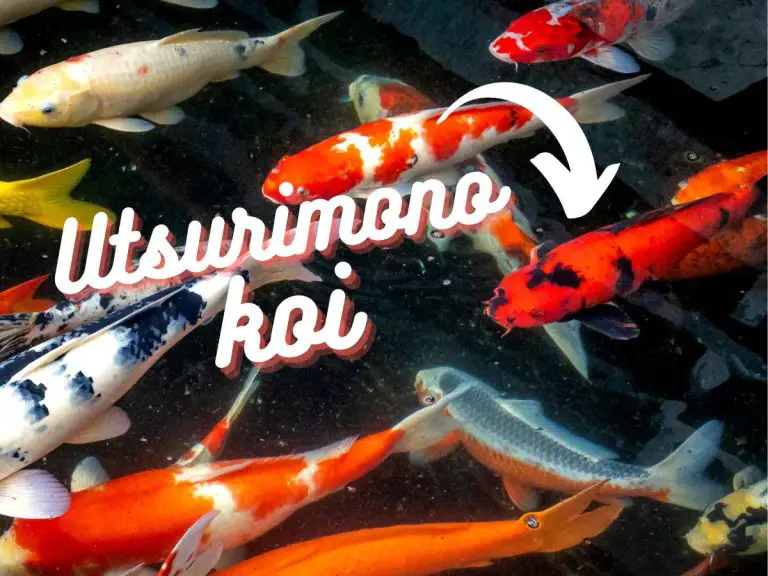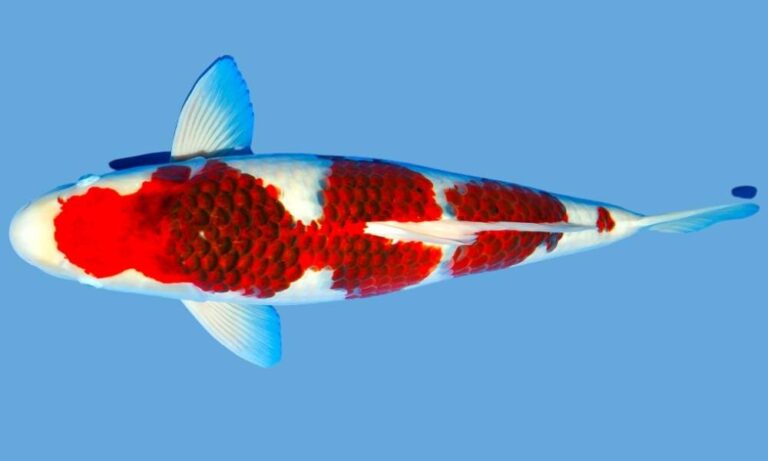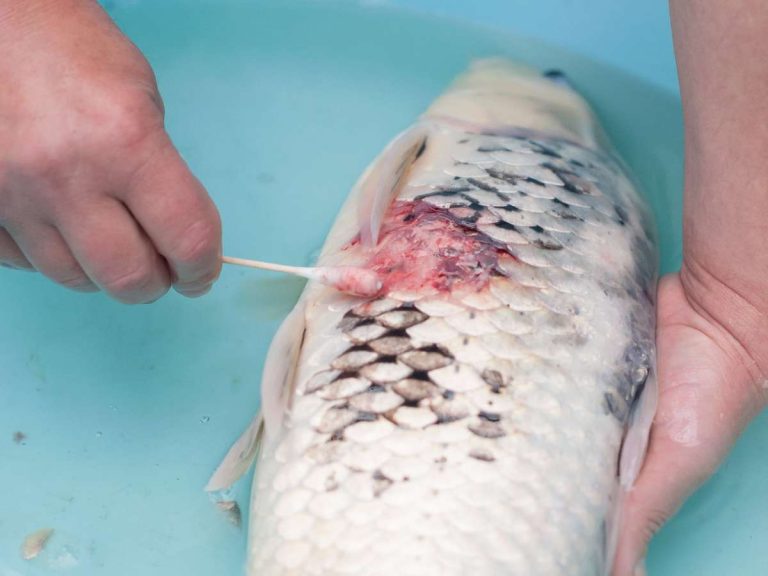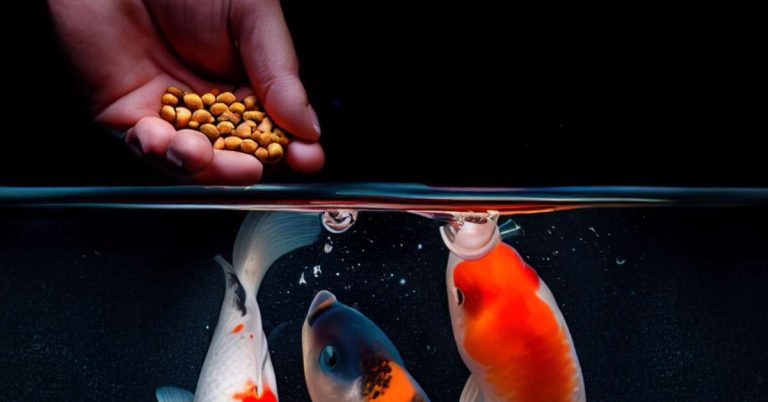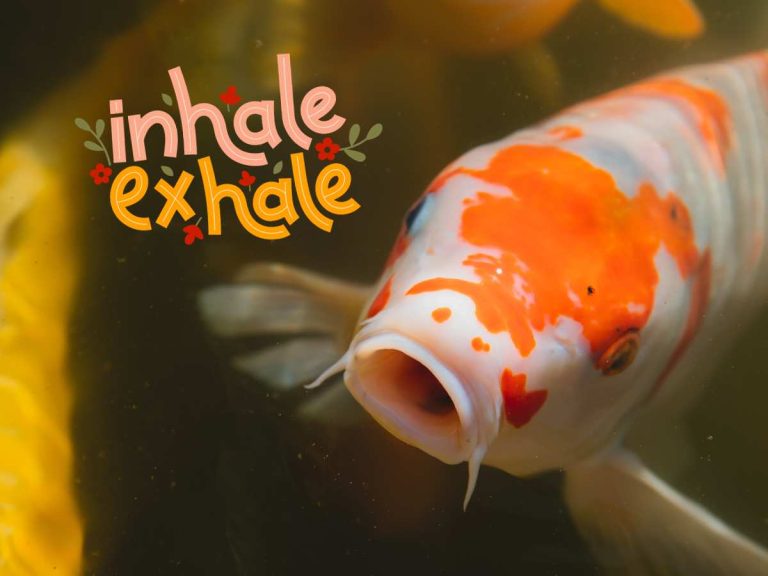Will My Koi Pond Freeze in Winter? How To Keep Koi Ponds From Freezing
The winter season can be a challenging time for koi pond owners. I bet you’re asking yourself, “Will my koi pond freeze during winter?”
Yes, without proper care, your koi pond can indeed freeze when the temperature drops during the winter. Freezing temperatures can have adverse effects on both the health of your koi and the functionality of your pond. However, with the right temperature control methods and insulation techniques, you can create a suitable environment for your koi even in the coldest winter months.
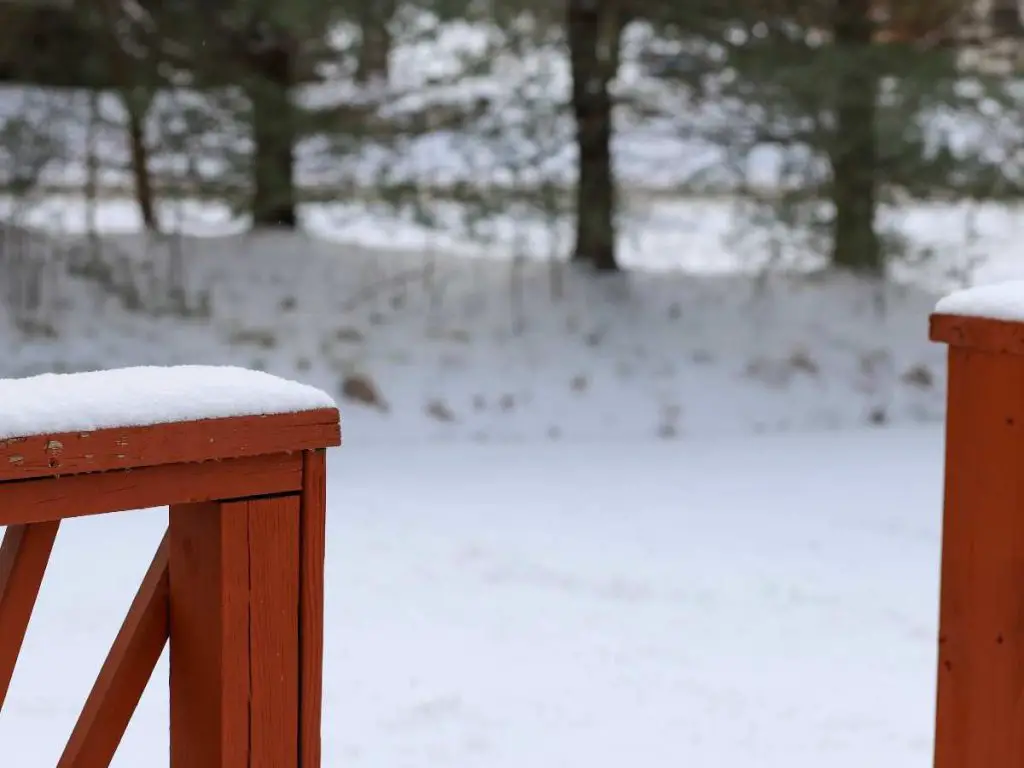
From installing pond heaters and de-icers to using circulation systems and aerators, there are numerous options to help keep your koi pond warm. And we’re exploring them all, so your backyard pond can stay functional throughout the winter.
We’ll also explore how to insulate your pond using effective strategies like floating insulating covers, pond netting, and foam board insulation as effective strategies.
So, if you’d like to learn how to winterize your koi pond, protect your beloved koi, and ensure they thrive even when the weather turns bitter cold, keep reading!
Will my koi fish survive winter?
Your koi fish can survive winter, but only if you’re proactive. Freezing temperatures can have a significant impact on the health and functionality of your koi pond. Without proper care, your beloved koi, as well as the overall condition of the pond, may be at risk.
Freezing can be detrimental to the health of your koi. The extreme cold temperatures can cause their metabolism to slow down, making them less active and more susceptible to illness. It can also lead to a decrease in oxygen levels in the water, which can further stress the fish and potentially even lead to their death.
Freezing can also affect the overall functionality of your pond. Ice formation can restrict the flow of water and hinder the operation of your filtration system. This can result in a build-up of toxins and waste in the water, making it an unsuitable environment for your koi to thrive.
So preventing pond freezing is crucial to ensure the well-being of your koi and the proper functioning of your pond. By taking the necessary measures now, you can help create a safe and regulated environment that will support the health of your fish throughout the winter season.
How To Keep My Koi Pond From Freezing?
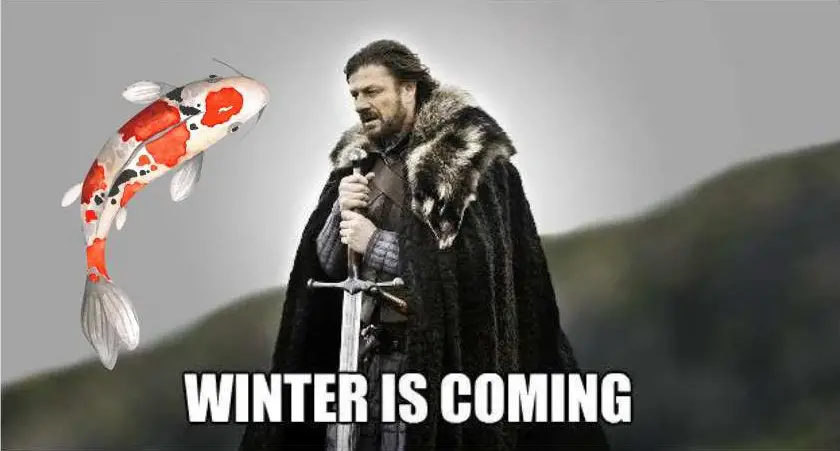
There are two main ways to control the temperature of your koi pond during winter to keep it from freezing: installing heaters, and or using aerators.
Installing pond heaters or de-icers
When it comes to ensuring your koi pond doesn’t freeze during winter, installing pond heaters or de-icers is critical. These devices work by maintaining a certain temperature in the pond, preventing the water from freezing over completely.
Good to know: Pond heaters are submerged in the water and use electricity to heat the water, while de-icers sit on the surface and create a small hole in the ice to allow for gas exchange.
How to Pick a Koi Pond Heater and De-Icer
When choosing a pond heater or de-icer for your koi pond, it’s essential to consider the following factors:
- Wattage: The power of the de-icer determines its efficiency. A higher wattage means it can melt more ice, but it also consumes more electricity.
- Material: The construction material of the de-icer affects its durability. Stainless steel is more durable than plastic.
- Warranty: A longer warranty period indicates the manufacturer’s confidence in the product’s longevity.
- Thermostatic Control: This feature allows the de-icer to turn on and off based on the water temperature, saving energy.
- Cord Length: A longer cord provides flexibility in positioning the de-icer, especially if your power source is far from the pond.
Recommended Heater*
| Heater Name | Wattage | Material | Warranty | Cord Length |
|---|---|---|---|---|
| Aquascape Pond Heater and De-icer | 300 Watts | Stainless Steel | 3 Years | 22 Feet |
Note: The Aquascape Pond Heater and De-icer stands out due to its durable stainless steel construction, energy-saving thermostatic controls, and a three-year warranty. Plus it works for both heating and de-icing. Highly recommended!
Recommended De-Icers*
| De-Icer Name | Wattage | Material | Warranty | Cord Length |
|---|---|---|---|---|
| Aquascape Pond De-icer | 300 Watts | Stainless Steel | 3 Years | 22 Feet |
| TetraPond De-icer | 300 Watts | Plastic | 3 Years | 15 Feet |
| Farm Innovators Pond De-icer | 1,250 Watts | Aluminum | 3 Years | 10 Feet |
| K&H Pet Products Pond De-icer | 100 Watts | Plastic | 1 Year | 12 Feet |
| Laguna Power Heat | 315 Watts | Plastic | 1 Year | 22 Feet |
Remember, while de-icers help maintain an open area in the ice, promoting gas exchange is crucial. Using an aerator in conjunction with a de-icer can ensure proper oxygen levels and the release of harmful gases from the pond.
*Please note that I’ve compiled this information to the best of my ability, but details may vary or change. Check your specs before purchasing any pond equipment.
Using circulation systems and aerators
To further prevent freezing, you might want to consider using circulation systems and aerators in your koi pond. These tools help keep the water moving and oxygenated, reducing the likelihood of ice formation.
A circulation system can be as simple as a water pump that creates a gentle current, while an aerator introduces air into the pond to increase oxygen levels.
Both of these methods contribute to maintaining a healthier wintertime environment.
Don’t forget to check the temperature!
Both of the above methods can really only work properly if you use thermostats and/or temperature sensors. How else will you know if you’re keeping things warm enough?
A thermostat can be connected to your pond heater or de-icer to regulate the temperature, ensuring it stays within the desired range. Meanwhile, temperature sensors are useful for monitoring the water temperature at different depths, allowing you to make adjustments as needed.
By using these tools, you can have better control over your pond’s temperature and protect your koi from the dangers of freezing.
Winter insulation techniques for koi ponds
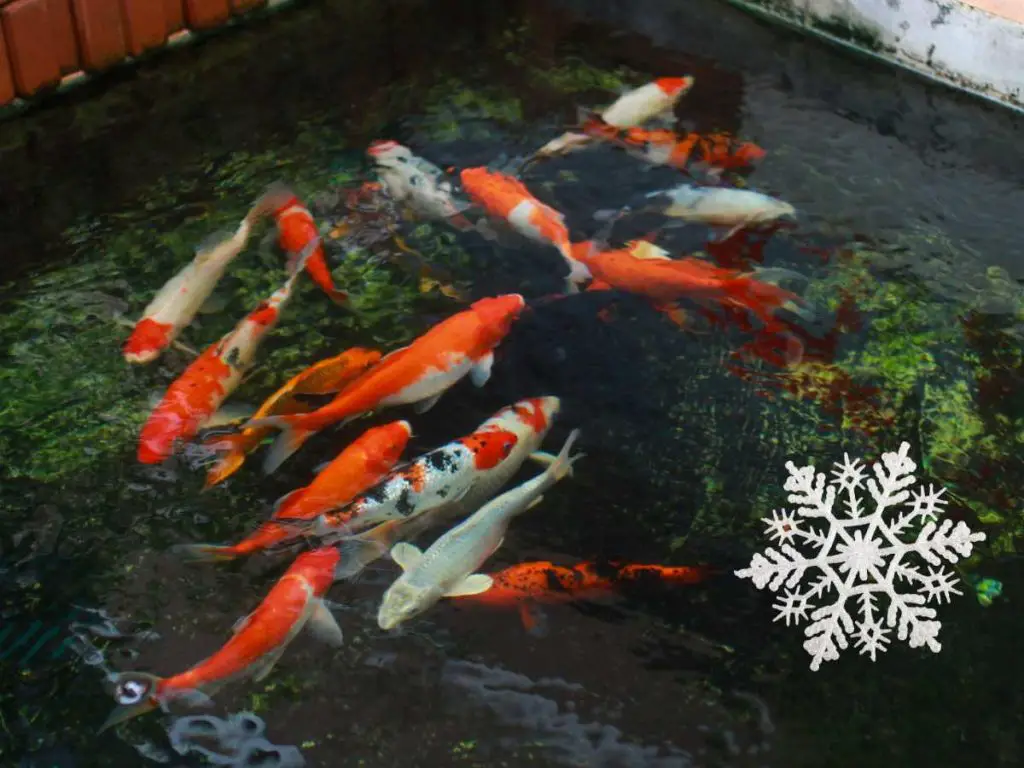
A koi pond can be a beautiful addition to any backyard, but it’s important to protect it during the cold winter months. Without proper insulation, the pond water can freeze, causing harm to your precious koi fish and potentially damaging the functionality of the pond itself.
So, what can you do to prevent this from happening? Here are three popular insulation techniques you can use to help you keep your koi pond safe and secure throughout the winter.
1. Add floating insulating covers
One effective way to insulate your koi pond is by using floating covers. These covers act as a barrier between the cold outdoor air and the water, helping to retain heat and prevent freezing. They are designed to float on the surface of the pond and can be easily installed and removed as needed.
Floating insulating covers come in various sizes and materials. Look for covers made from durable and waterproof materials like PVC or polyethylene. These materials are designed to withstand the harsh winter conditions and provide an effective layer of insulation for your koi pond.
2. Use pond netting or shade cloth
Another insulation technique is to use pond netting or shade cloth. These materials can be stretched over the pond to create a physical barrier that helps retain heat and prevent the water from freezing.
Pond netting is a popular choice because it not only acts as insulation but also provides protection against falling debris like leaves or branches. Shade cloth, on the other hand, can help block out some of the winter sunlight, which can reduce the temperature fluctuations in the pond and prevent freezing.
3. Apply foam board insulation around the pond edges
If you’re looking for a more permanent and insulating solution, consider applying foam board insulation around the edges of your koi pond. Foam board insulation is made from materials like polystyrene or polyurethane and is excellent at trapping heat.
To apply foam board insulation, you’ll need to measure the dimensions of your pond and cut the boards to fit snugly against the sides. Then, secure the boards in place using adhesive or waterproof caulking. This method will create a strong and effective barrier against the cold winter temperatures, keeping your koi pond warm and insulated.
Winterizing a koi pond: Preparation steps
Winter is coming, and it’s time to get your koi pond ready for the icy days ahead. By taking some simple preparation steps, you can ensure that your beautiful fish and pond stay healthy throughout the winter season.
The first step in winterizing your koi pond is to give it a good cleaning. Take the time to remove any fallen leaves, twigs, or other debris that may have accumulated in the pond. Not only will this help maintain water quality, but it will also prevent potential blockages in filters and pumps.
Before the winter freeze sets in, it’s also important to tidy up your aquatic plants and remove excess vegetation. Trim any dead or dying foliage to prevent decaying matter from contaminating the water. And remove any excess vegetation that may have grown too close to the pond’s surface, as this can create a layer of insulation that makes it harder for heat to reach the water.
Finally, adjust your water parameters and ensure you’re providing proper nutrition to your fish.
Remember that as the temperatures drop, your koi’s metabolism will slow down. They’ll need to feed them differently (although pay attention if your koi lose their appetite unexpectedly).
You might also consider switching to a cold-water fish food formula that is easier for the fish to digest in lower temperatures.
Learn more about how to feed your koi during winter here.
Additional tips and considerations for winter care of koi ponds
Keeping your koi and your koi pond safe during winter isn’t just about keeping the ice at bay. You’ll also want to keep the following in mind.
Monitoring water quality and adjusting filtration
Keeping an eye on the water quality of your koi pond during the winter months is crucial for the health of your fish. With the freezing temperatures, it’s important to ensure that the water remains clean and well-filtered. Regularly checking the pH levels, ammonia levels, and oxygen levels will help you identify any potential issues early on. If necessary, make adjustments to the pond’s filtration system to ensure proper water circulation and filtration.
Regularly checking and cleaning the filters is also essential. Winter can bring more debris and fallen leaves into the pond, which can clog the filters and impact the water quality. By cleaning the filters regularly, you’ll improve the efficiency of the filtration system and maintain a healthier environment for your koi.
Protecting against predators and winter pests
While you’re focused on keeping your koi pond safe from freezing, don’t forget to consider the threat of predators and winter pests. Some predators, like raccoons or herons, may see your pond as a potential buffet. Installing a protective net or adding motion-activated devices can help deter these unwanted visitors.
Additionally, be mindful of any pests or insects that may try to make a home in your pond during winter. Regularly inspect the pond and remove any potential breeding grounds to prevent infestations.
Using backup power sources in case of power outages
Power outages can occur during winter storms, leaving your koi pond vulnerable without essential equipment such as pond heaters or filtration systems. It’s a good idea to have a backup power source in place to ensure the continuous operation of these vital components. Consider investing in a generator or a battery backup system to keep your pond running even during power outages.
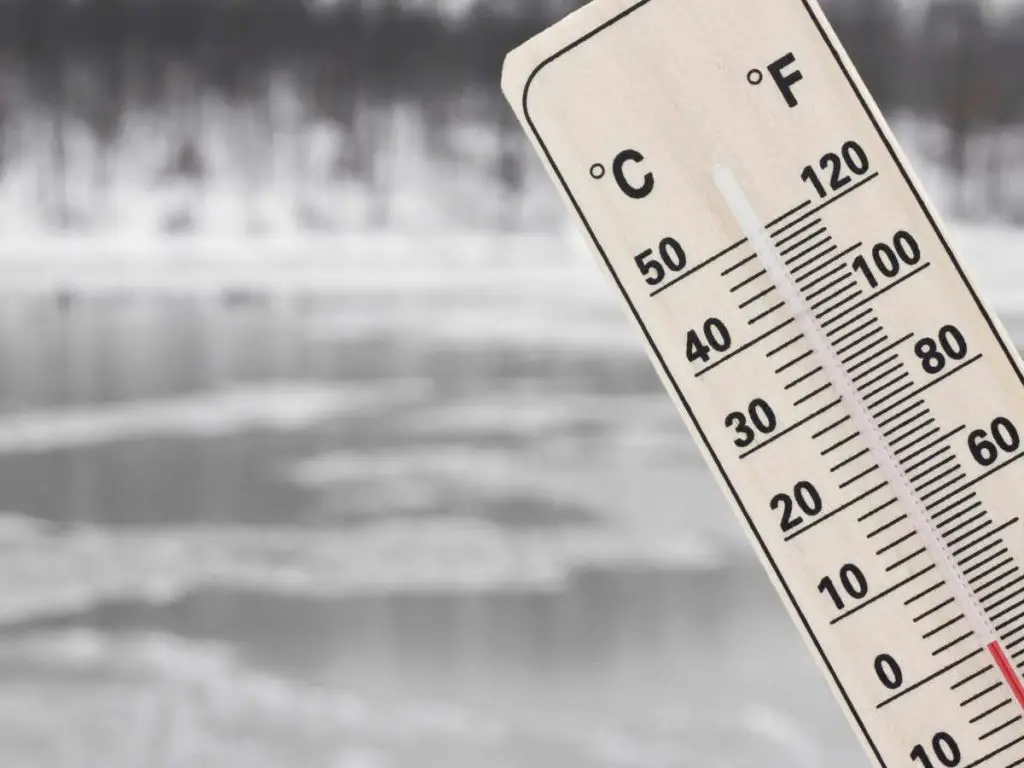
Your Pond Can Survive Winter!
In this article, we’ve explored the important topic of preventing koi pond freezing during winter. We’ve learned that without proper care, a koi pond can indeed freeze, posing risks to the health of our beloved koi and the functionality of the pond itself. However, there are effective measures we can take to ensure our koi ponds remain safe and thriving throughout the colder months.
By implementing temperature control methods such as pond heaters or de-icers, circulation systems, and thermostats with temperature sensors, we can maintain a suitable environment for our koi. Additionally, insulation techniques such as floating insulating covers, pond netting or shade cloth, and foam board insulation help to further protect against freezing temperatures.
Preparing our koi ponds for winter is also essential. Cleaning the pond and removing debris, trimming aquatic plants, and adjusting water parameters will contribute to a healthier pond environment. Furthermore, we provided recommendations for pond heaters, de-icers, and insulation products to make choosing the right equipment easier.
Ultimately, taking care of our koi ponds during winter is crucial. By following the tips and advice outlined in this article, we can effectively prevent koi pond freezing and ensure the well-being of our koi. Don’t wait until it’s too late. Take action now and provide the necessary care for your koi pond during winter!
Key takeaways
- A koi pond can freeze without proper care.
- Effects of freezing on koi health and pond functionality.
- Temperature control methods: pond heaters, de-icers, circulation systems, thermostats.
- Insulation techniques: floating insulating covers, pond netting, foam board insulation.
- Preparation steps: cleaning the pond, trimming plants, adjusting water parameters.
- Recommended products: pond heaters, de-icers, insulating covers, pond netting, foam board insulation.
- Tips and considerations: monitoring water quality, protecting against predators and winter pests, backup power sources.
- Winter care is important for koi pond health and should be prioritized.
Related Questions
Can I still feed my koi fish during the winter?
It is generally recommended to stop feeding koi fish during the winter months when the pond water temperature drops below 50 degrees Fahrenheit. Koi fish have slower metabolisms in colder temperatures and their digestion slows down, making it difficult for them to properly process food. Feeding them during this time can lead to health issues. It’s best to wait until spring when the water temperature rises before resuming regular feeding.
Do I need to completely drain my koi pond for winter?
Completely draining a koi pond for winter is usually not necessary, and in fact, is often discouraged. Partially draining the pond can be done to reduce the water volume and prevent excessive freezing, but it is important to leave enough water to provide insulation for the koi fish against colder temperatures. Consult with a professional or do thorough research before deciding to drain your pond completely, as it can disrupt the pond ecosystem and potentially harm the koi and other pond inhabitants.

